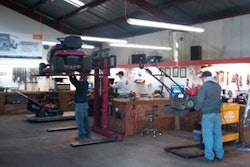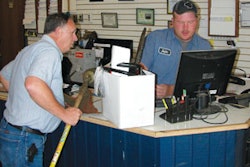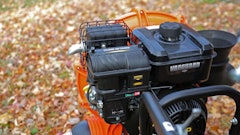For dealers, keeping control of parts and wholegoods inventory can be tricky. To really understand the need for a better system, it’s important to understand how your parts and wholegoods are holding you back.
Inventory Overload
Many dealers have excessive amounts of parts and wholegoods. Money that could or should be spent elsewhere is stuck on the shelves or in the showroom.
“Excess parts and wholegoods create a situation where needed stocking items are not purchased because of the current excess investment,” explains consultant Ed Kovalchick of Net Profit Inc.
“Consequently, this costs profits when technicians and salespeople don’t have on-hand quantities of items which could be sold now—sales are lost.”
Not only does excess parts and wholegoods inventory get in the way of a sale, it just plain gets in the way. Having more than you need in parts storage or on the showroom floor can get in the way of general business operation, reducing efficiencies.
“The repair side of the business is a huge profit center,” says Paul Leao of Ariens Company. “You can build that up by showing the customer how clean and organized processes are.” Improving parts storage processes improves the customer’s overall experience, hopefully leading to return visits and referrals.
Evaluate and Purge
To get that idle inventory out of the way, dealers should evaluate which parts and equipment are needed and which are in less demand. “Many dealers do not track their inventory,” says dealer Lynn Pesson of Southland Engine in Lafayette and Iberia, LA. “You have to track it to know where you are and what needs to be changed.” Anything overstocked or aged should also be eliminated.
Pesson and his staff spent several days and hours evaluating their inventory. “We found that we didn’t need anywhere near the stock we had to be able to make it,” explains Pesson. “We were buying enough stock to make it through five or six months. We now do a 30- to 60-day run.”
Pesson suggests working with distributors and evaluating their freight times and charges to keep appropriate parts stocked. The quicker they can get you parts at a decent price, the easier it will be to maintain appropriate stock levels.
Deciding which parts are idle is done on a case-by-case basis, but Leao suggests anything that has sat on the shelf for two years be purged. “The dealer has to make the call based on how many they sell a year and whether it’s worth carrying the part for that one particular customer that may come in,” explains Leao. “Ideally, dealers should get rid of anything that has seen zero movement and zero demand in two years.” Leao also suggests that dealers use their inventory history as a tool when deciding on quantities to stock.
Eliminating the inventory that’s holding you back will take time and planning. “An aggressive plan should be developed to sell excess inventory,” says Kovalchick. “There is a market for everything and everything can be sold with the right strategy.” Inventory can be sold through auctions, online, or directly to customers and other dealers.
Storage and Monitoring
Once inventory has been whittled down, what’s left should be well organized in a manner that allows for easy operation.
“Setting everything in order makes sure those needed things are right where they need to be,” says Leao. “LEAN is all about driving the waste out of the process, so when laying out the parts area we should store our highest-usage parts closest for easy retrieval.”
Putting high movers nearby has the potential to improve efficiencies greatly. Many dealers choose to store them in parts cabinets, such as those offered by Lista and Stanley Vidmar. Solid, consistent labeling of parts can also help. Once everything is sorted and set in place, whether it is on a shelf or in a parts bin, it should be clearly labeled with a label maker or barcode.
Evaluating equipment and parts inventory as well as storage should be an ongoing focus. “Every inventory’s status should be checked monthly for aging and overstock,” advises Kovalchick. “Waiting for months to analyze inventory conditions is asking for a serious problem—it’s better to eliminate these issues when they are in their infancy.”
Staying on top of inventory levels and management makes monitoring it that much easier. Parts management functions within a good, industry-specific business management system are invaluable.
Just the Beginning
Evaluating inventory levels and storage for LEAN operation will ultimately lead to better customer satisfaction. Maintaining a clean, focused inventory makes the employee’s job that much easier, improving the environment and morale. The freed-up time previously spent tracking and maintaining large, unorganized inventories can now be given to the customer.
Parts and wholegoods inventory is just the first phase in the LEAN series. Taking this first step is a huge commitment to an overall LEAN operation. Adjusting inventory levels and storage will be time-consuming, but once completed, will make future LEAN processes that much easier to implement. All will work together in a system to make your business more profitable.




















